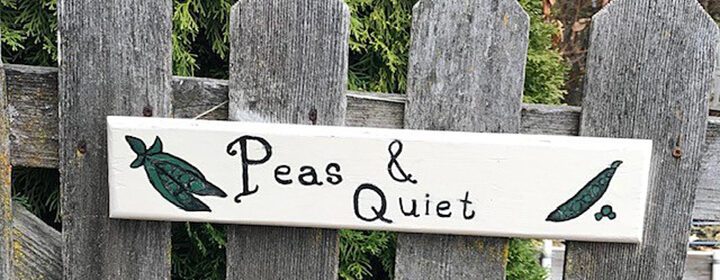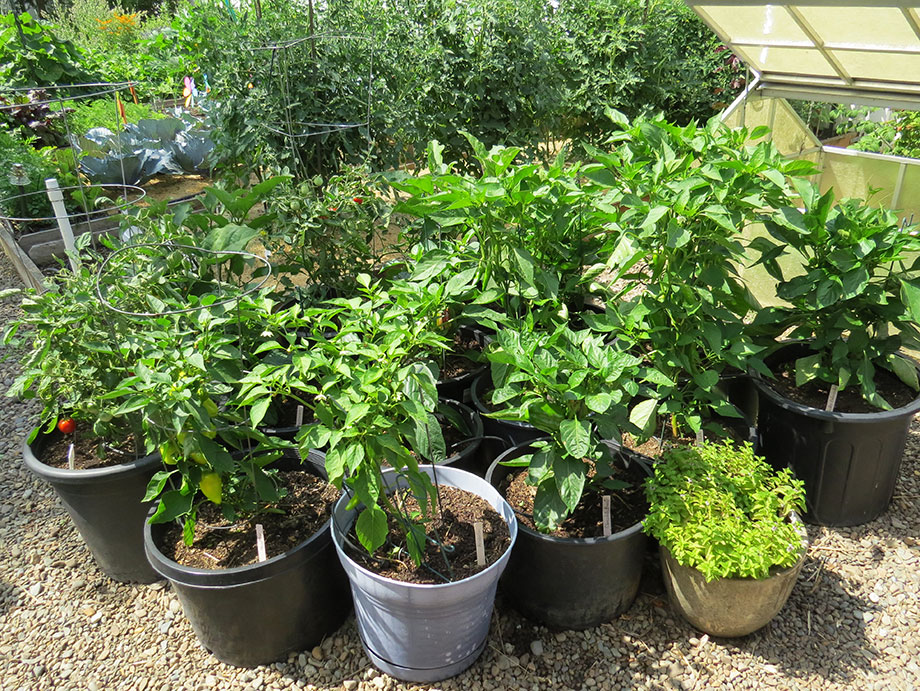March 27 Column: Container Vegetables

For this week’s column, I detailed how to grow vegetables in containers. I realize that some folks are very limited in space or they live in an apartment or condo. Container vegetables to the rescue! You can read my column in today’s edition of The Spokesman-Review: No space? No problem, as many vegetables can be grown in containers. Or you can read the text of my column underneath the video.
You’ll find information on choosing a pot size based on the vegetables you want to grow. I discuss the best type of soil to use and self-watering containers. I hope you’ll find the column interesting. Even though we have a large vegetable garden, we also grow vegetables in pots. You can never have too many veggies, right? This year, we’ll grow regular potatoes, sweet potatoes and tomatoes in containers.
I had a lot of fun putting together this week’s video. Bill and I moved our our hoophouse and livestock panel arbor to another area of the veggie garden. I also set up our bean arbor. I left the camera rolling while we did all that, but sped it up a bit so it wouldn’t be too boring!
You’ll also find more information about the agricultural insect netting that we are testing in our garden this year. This has generated so much interest! Lastly, you will see how I prune back the geraniums (Pelargoniums) that I overwintered. This promotes more compact growth and the bonus is that I am rooting some of the cuttings. I love free plants!
I hope you’ll enjoy the video:
Garden column about container vegetables:
by Susan Mulvihill
Growing vegetables in containers is an excellent option for folks living in an apartment or on a small lot with no room for a garden space.
The plants will perform best if they receive at least six hours of sunlight daily. If you anticipate needing to move your pots to follow the sun, consider placing casters underneath them. Vegetables that tolerate a bit of shade include beets, broccoli, chard, kale, lettuce and spinach.
Container considerations:
Containers are available in terracotta, plastic, or wood. Cloth “grow bags” work really well, too; gardeners often use them for growing potatoes but many other crops will flourish in them. There are even spacing-saving, vertical gardening containers that have multiple tiers.
Start with a large, clean container that drains well. This is crucial because vegetable plants will decline rapidly if their roots are wet all the time. Select the correct pot size, based on the veggies you intend to grow. Look for recommendations in the information box.
Be aware that the soil in containers dries out more quickly than the soil in a garden. The larger the container, the longer the soil will stay moist. Many garden centers sell self-watering containers that have a water reservoir below the growing area. The potting soil wicks the water up to the roots and provides plants with consistently-moist soil. These pots are ideal if you occasionally leave town for a few days.
Use organic potting soil. Pre-moisten it before filling the pot. The top of the soil should be about two inches below the lip of the container to keep it from overflowing each time you water. Avoid using garden soil because it is heavy, can compact easily and might contain disease pathogens.
You can grow just about any kind of vegetable in a container. Look for compact, dwarf or bush varieties of vegetables rather than tall plants. For example, instead of growing pole beans, which require a vertical support, consider bush beans because they are much more compact. Choose a determinate tomato variety (Celebrity, Early Girl, Oregon Spring, Patio, Stupice or Tiny Tim, for example) for the same reason.
Choices for Container Vegetables
You’ll often have better success growing certain types of vegetables if you start them ahead of time indoors or purchase seedlings at a garden center. These include artichokes, broccoli, cabbage, eggplants, peppers and tomatoes. Vegetables that do best when started from seeds that are sown directly into the pots include beans, carrots, chard, kale, lettuce, peas, and radishes.
Since most potting soil is sterile, provide your vegetable plants with the nutrients they require in order to produce a crop, whether it’s leaves, roots or fruits. Always use organic fertilizers and check the labels to choose the ones that will benefit your crops.
Monitor the soil moisture throughout the season to ensure the plants aren’t drying out or getting overwatered. At the end of the season, empty your containers and scrub them so they are clean and ready to use next year. What about the used organic potting soil? The general rule of thumb is that it can be added to your compost pile provided your plants didn’t have any disease problems.
Container sizes
Large vegetables (artichokes, potatoes, pumpkins, summer squash, tomatoes): 5- to 10-gallon pots.
Medium-sized vegetables (broccoli, cabbage, cucumbers, eggplants, peppers): 5-gallon pots.
Smaller-rooted crops (chard, lettuce, radishes, spinach): 1- to 2-gallon pots.
Root crops (beets, carrots, parsnips, turnips): make sure the depth of the pots will accommodate the anticipated length of the roots.
Susan Mulvihill is author of “The Vegetable Garden Pest Handbook.” She can be reached at Susan@SusansintheGarden.com. Watch this week’s video at youtube.com/susansinthegarden.

